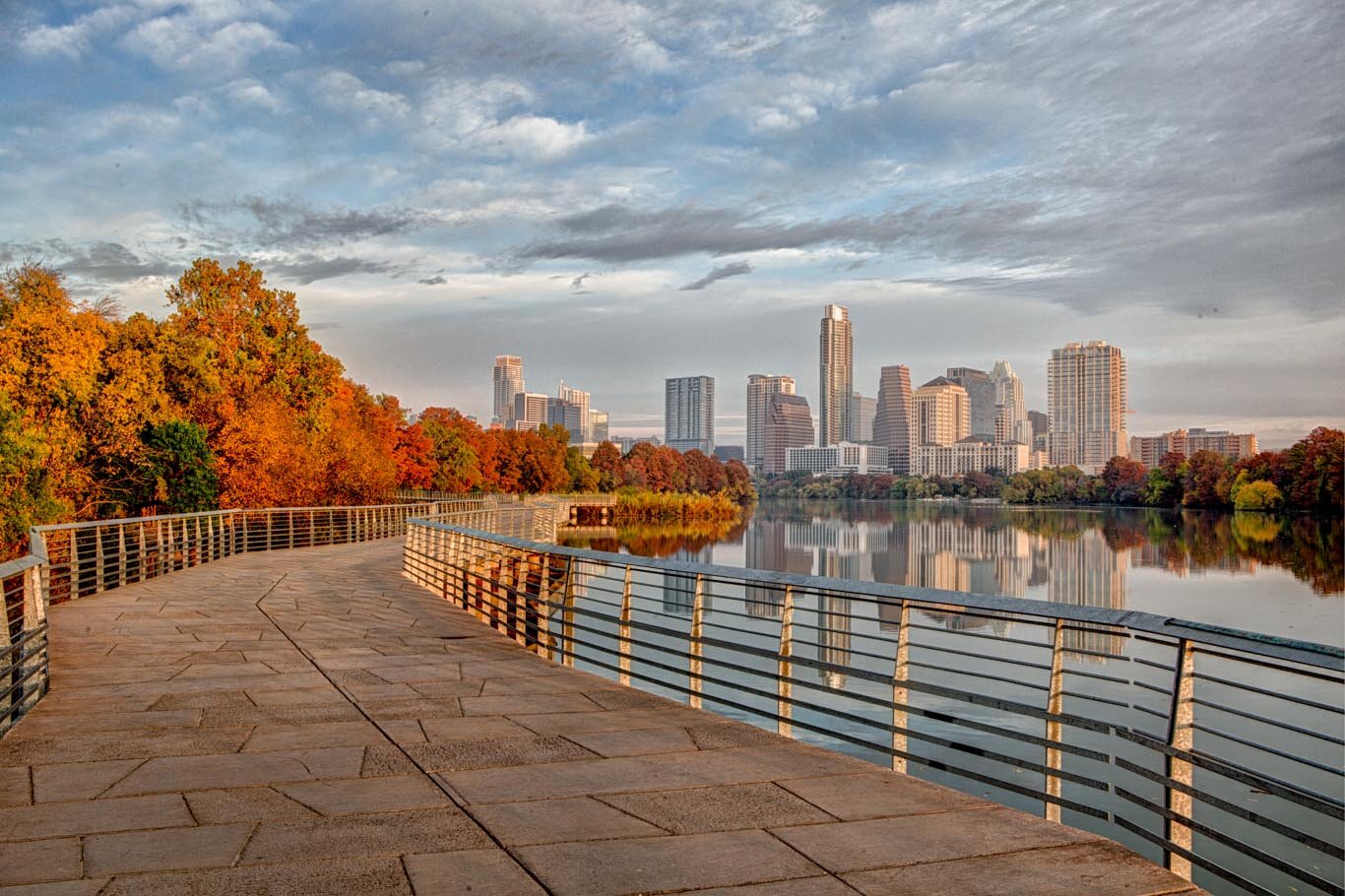Our new office is decorated with incredible photographs of the Austin cityscape shot by local photographer Greg Daily. We decided to ask Greg a few questions so that we can get to know him better, and so that you can too! You can find out more about the services Greg offers, including real estate and branding photography, by visiting his website: mytexasphotographer.com
~~~
Your portfolio includes a variety of subjects, from abstracts to wildlife to real estate. Tell us a little about the wide range of services you offer.
Early on in my photography career, I decided to specialize in just a few areas. My thought was that I would work on getting really good in a few areas rather than being just OK in a ton of areas. Most of the time when I tell people I am a fulltime photographer they assume that I do weddings, family portraits and events. Actually I don’t really do any of those. My focus is on fine art, real estate and lifestyle photography. I also incorporate my images into architectural designs.
I take a lot of photos for real estate agents who are looking to market their listings through the MLS and other marketing efforts. They may be residential or commercial agents and I shoot both interior and exterior of homes and buildings. In addition to the real estate shots, I shoot a lot of lifestyle / branding for people who are looking to promote themselves or their brand in social media and their marketing campaigns. My fine art photography is often found in homes and offices as statement pieces.
You do work with digital glass. What exactly is digital glass and what is it used for?
Digital glass is something that is relatively new and as far as I know I am the only one in Austin who is focused in this medium. Digital glass or printed glass is glass that has an image infused into the glass by using ceramic inks and then placing the glass into a kiln and baking it over a period of time. Although printing on glass has been around for a while, in 2007 ceramic inks were introduced which opened up the opportunities to incorporate printed glass into architectural designs.
There are machines that print digital glass with sizes up to 12 feet long or 7 feet wide in a variety of widths up to ¾ inch thick. You are starting to see TV Ads for printing on glass. Most of these are for much smaller images and just intended to hang on the wall versus being incorporated into architectural designs.
Digital Glass in Commercial applications can include elevator panels, stair railing, glass walls and corporate signage just to name a few. On the residential side of things you can now create kitchen and bath backsplashes. This will be one pane of glass in most cases and it can be back lit, which creates an extraordinary statement piece.
In your view, what makes a good photograph and how do you achieve it?
I am not sure how to answer this question. When I was not as experienced in photography as I am now, I used to think that I had some really good photos. In fact all of my friends and family told me so time and time again and I finally started to believe them. Now I look back at what I thought was a good photo, I am almost embarrassed to show anyone or display them.
Now I have more experience, I know what I think is a good photo and even others might think it is a great photo but nothing ever happens with it. It might make it on my webpage but it does not really speak to anyone or get any additional exposure. So I guess the eye of the beholder applies here.
As far as to the second part of your question on how I achieve it, that is difficult to answer as well. I think anyone can take a good or even great photo. The question is how many bad photos do you need to take before you get a great one? Now that I have been shooting at a professional level for over 20 years, the number of bad photos I take as a percentage is much smaller. I could go into all of the lessons that are out there about the rule of thirds and composition but I never really studied those. I just naturally know what looks good and with experience I have learned to take fewer photos to get the great ones.
I have learned that once you have a good and interesting composition that editing the photo will take it to the next level. I have taught myself a lot about editing the photos. In fact, I never intended for this to happen but people often think that my photos are paintings. I heard that comment so frequently when it came time for me to design my logo, I incorporated paint brushes into the design and I call many of my images fine art.
There are so many beautiful spots in the Texas Hill Country, what are some of your favorites?
I don’t really have any favorite places to shoot. I love to take road trips and run the back roads and just see what I can find. I especially love to do this during the wildflower season. I Love to shoot lone trees, old trucks and cars, old barns and fields of wild flowers. To me if the day is cloudy it is a much better day to go out and take pictures than a day that is bright and sunny. Completely opposite of what most people think.
You’ve said that your second passion is cooking. Have you discovered any recipes you really love and would like to share?
I love to cook however I don’t follow any recipes. I often will look at recipes in a cookbook or online just to get some ideas and then I end up doing my own thing. My Dad was a good cook and I believe I gained the passion from him. Now I am fairly creative in the kitchen and after learning the basic skills from my Dad, I remember in college buying spices and looking on the label to see what they went with. So if I was making soup, I would find the spices that said, goes well with soups and add them to the pot. Eventually cooking shows started to appear on TV and I would watch them and get inspired and pick up a few tips and tricks. I don’t have a specialty but just enjoy cooking and I love my leftovers.
~~~






